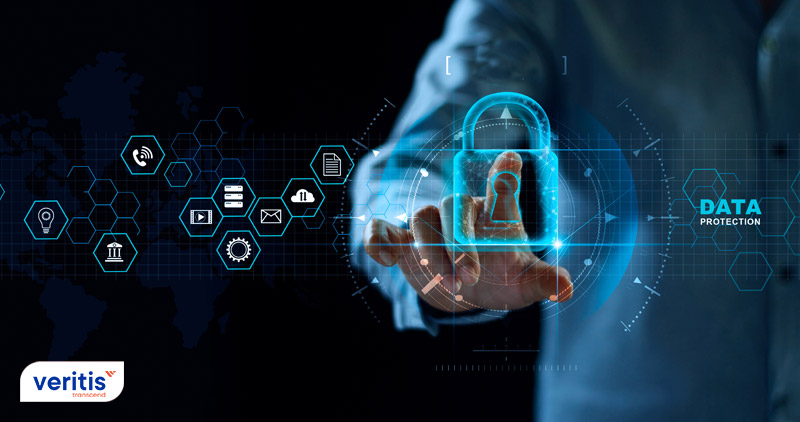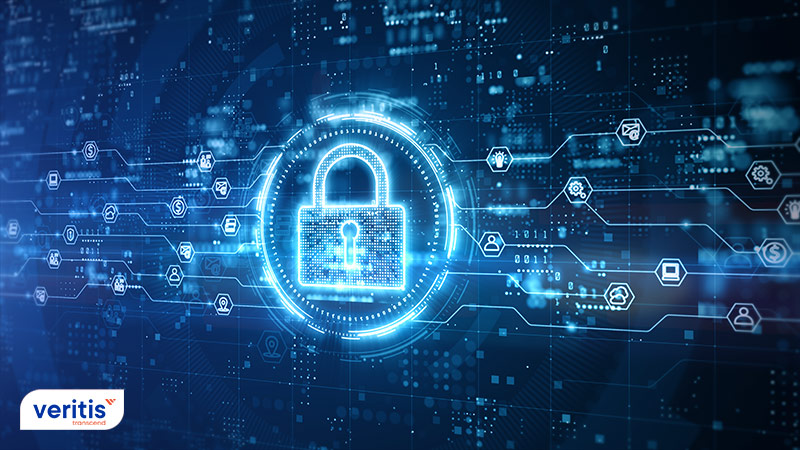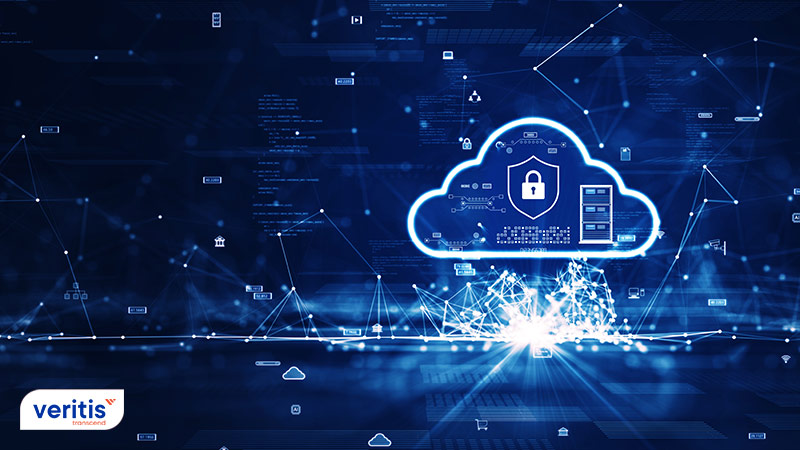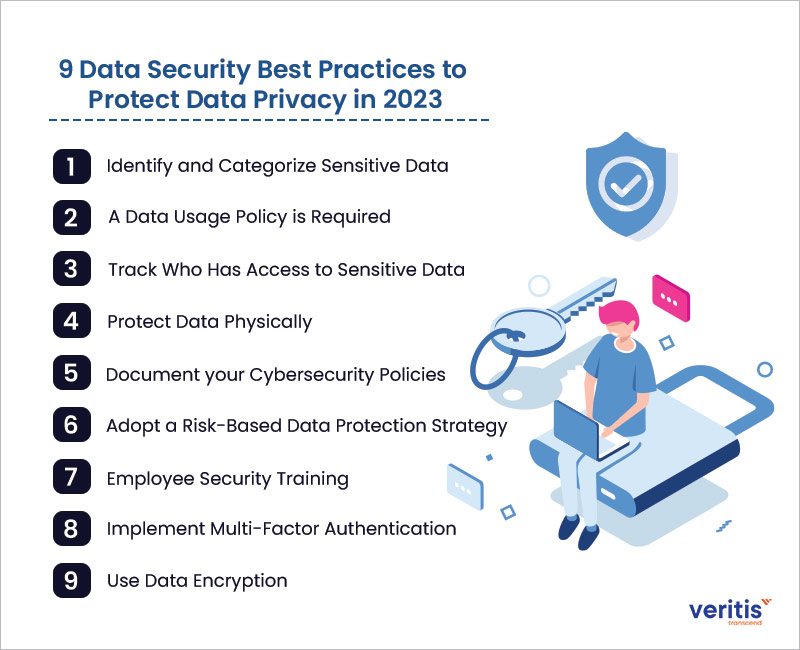
Cybersecurity is a moving target requiring ongoing attention, with new and seasoned threats and adversaries to face daily. Threats can take many forms, ranging from nation-state actors and insider threats to unintentional usage and ransomware assaults.
Crucial organizational data must be secured at the source to prevent compromise. However, protecting it requires a lot of work because data is created and stored by individuals, networks, clouds, and devices. Fortunately, there are tools, guidelines, and processes available to help assure its protection.
Make sure that the data for your business is secure by remaining vigilant. From the server to the endpoint, on the web, at work, and on the systems of your clients, you should be everywhere, closing every possible security gap.
Why? Because the risk is genuine and increasing. The fact that smaller firms are similarly appealing to cybercriminals even though they frequently target big corporations is an open secret. It makes sense logically. Small companies typically employ fewer controls and data protection principles that are simple to penetrate to maintain the mentality that there is “not much to steal.”
According to a breach report from Verizon, 71% of data breaches are typically motivated by money. Hackers gather consumer data with the obvious goal of taking advantage of businesses and the public at large financially.
Data privacy laws such as GDPR and CCPA, as well as rising and changing cyber threats, force organizations to focus more on the security of their data. Data breaches are expensive and are bad for a company’s reputation.
Your business will collect, store, and process data from clients, other partners, and internal procedures. These data are frequently both valuable and very sensitive, and, in the case of client data, they are subject to strict regulations. Issues with data security compliance have adverse effects on businesses, and attacks happen more frequently. Therefore, businesses must invest in data security standards to combat the increasing cybersecurity concerns.
Before going in-depth about data security best practices, let’s dive into the concept of data security and the importance of data security.
Consult our Data Security Consultant
What is Data Security?

A set of procedures and equipment known as data security aims to protect the delicate resources of an organization. Both while in transit and at rest, sensitive data must be protected. Data officers should also consider secure data creation and use it as additional data security threat vectors.
Data technologies employ multiple security techniques to protect data from unintentional or malicious destruction, disclosure, or change.
The application of data security compliance uses administrative controls, physical security, logical controls, organizational standards, and other protective methods. These data security software techniques will restrict unauthorized or malicious access to the data repository when used either separately or—more frequently—all at once.
Useful link: Security Breaches Rising Exponentially; Weak Authentications Exploited
Why is Data Security Essential?

More than ever, it is essential to safeguard your data from both internal and external threats. Your cybersecurity plan should include data security threats to help firms become more robust to cyberattacks.
Companies handle data irrespective of their size or sector. Both large and small organizations use data, from banking institutions processing massive amounts of personal and financial information to startups and SMBs collecting client contact information.
Data security platform strives to protect the information that a company gathers, keeps, produces, processes receives, or transmits. Another critical factor in determining the value of data security standards follows laws and standards such as HIPAA, PCI-DSS, and GDPR.
It must be protected to handle, process, store, or collect data security software regardless of the tool, technique, or approach employed. Significant fines and potential legal action can result from data breaches. In addition, any harm to a company’s reputation may have extra financial effects in the form of lost sales and clients.
Useful link: All You Need to Know About Top 10 Security Issues in Cloud Computing
9 Data Security Best Practices to Protect Data Privacy in 2023

We have chosen procedures suitable for most organizations, even though different enterprises, geographies, and industries may call for different data protection principles. Follow these top 9 data security best practices to secure your organization’s sensitive data secure.
1. Identify and Categorize Sensitive Data
You need to be aware of the specific categories you have if you want to adequately protect your data. Allow your security staff to scan your data repository after that and have them produce reports on their findings. They can later categorize the information based on how valuable it is to your business.
The classification can be updated as new data technologies are generated, modified, processed, or communicated. Including rules to prevent users from inflating the classification level would be beneficial. For instance, it should be possible to upgrade or downgrade the data classification only for privileged users for data protection solutions.
2. A Data Usage Policy is Required
Data categorization is necessary, but it is not sufficient on its own. You must create a policy that specifies the different access forms, classification-based criteria for access, who has access to the data, what is considered appropriate data repository use, and other issues. For instance, allow users access only specified locations, then deactivate their access once done.
Remember that any policy violations should have severe consequences.
3. Track Who Has Access to Sensitive Data
You must provide the appropriate user with the appropriate access control. Using the principle of least privilege, restrict access to information such that only those rights are granted that are essential for achieving the desired result. This will ensure that the proper person is using the data. For instance, you can define the following essential permissions:
Full Control: The user has complete control over the data. This covers a variety of activities, such as storing, accessing, altering, deleting, and assigning rights.
Modify: Data can be accessed, changed, and removed by the user.
Access: The user has access to the data, but they cannot edit or delete it.
Modify and Access: Data can be accessed and changed, but it cannot be deleted.
4. Protect Data Physically
When addressing data security standards, physical security is often neglected. To prevent devices from being physically removed from your location, you might start by locking down your workstations when not in use. This will protect any sensitive components you use to store data, such as hard discs and data recovery plans.
To stop hackers from booting into your operating systems, setting up a BIOS password is another helpful data security Platform measure. Additionally, equipment like USB flash drives, Bluetooth gadgets, smartphones, tablets, and computers must be taken care of.
Useful link: Top 15 Cloud Security Threats, Risks, Concerns and their Solutions
5. Document Your Cybersecurity Policies
When it comes to cybersecurity, relying solely on word of mouth and gut feeling is not a wise move. Instead, document your cybersecurity best practices, regulations, and protocols. So, that it will be simpler to give employees and stakeholders access to online training, checklists, and information-specific knowledge transfer.
6. Adopt a Risk-Based Data Protection Strategy
Pay close attention to minute aspects like the risks your business may encounter and how those risks may affect employee and customer data. Proper risk assessment is necessary for this situation. Risk assessment enables you to engage in the following activities:
7. Employee Security Training
Inform every employee about your company’s best practices and regulations for cybersecurity. Keep them informed of new rules and regulations that the world is adopting by holding regular training sessions. Give them instances of actual security lapses and get their opinions on your present security measures.
8. Implement Multi-Factor Authentication
One of the most cutting-edge and effective types of data protection solutions is multi-factor authentication (MFA). Before validating an account, MFA adds a degree of protection. This implies that even if the hacker knows your password, they will still need to present a second or third mode of verification, such as voice recognition, security token, fingerprint, or confirmation on your smartphone.
9. Use Data Encryption
Although one of the most basic data recovery plans, encryption is frequently disregarded. All sensitive business data should be encrypted when at rest or in transit, whether through portable devices or the network. If portable systems are going to store any type of sensitive data, they should use encrypted disc solutions.
Encrypting the hard drives of desktop systems that house sensitive or confidential data will prevent the loss of important data repositories, even if a breach occurs and computers or hard drives go missing. For instance, Encrypting File System (EFS) technology is the most fundamental technique to encrypt data on your Windows PCs.
Conclusion
The list of safety measures shown above is not the only example of the data security best practices. There is more to it, such as performing frequent backups of all data, enforcing secure password procedures, encrypting data in transit and at rest, data security software, and similar things.
However, you must realize that cybersecurity is not about completely eradicating threats because it is impossible. Additionally, you shouldn’t disregard it. You can at least significantly reduce risks by using the appropriate security measures. This is where Veritis comes in place.
Veritis, the Stevie Award winner, is the preferred choice for enhancing technical data security and adhering to industry standards. Our team of experts can effectively secure your vital assets at work.
Got Questions? Schedule A Call
Additional Resources:
- What is Operational Security (OPSEC) and How Does it Protect Critical Data?
- What is Cloud Security Posture Management?
- What is Cloud Computing Security?
- How to Enhance Security in the Multi-Cloud Era
- Cloud Security Automation: Best Practices, Strategy, and Benefits
- 9 Keys to Selecting a Right Cloud Managed Services Provider (MSP)
- Cloud Infrastructure Automation: The Imperative for Cloud Success!